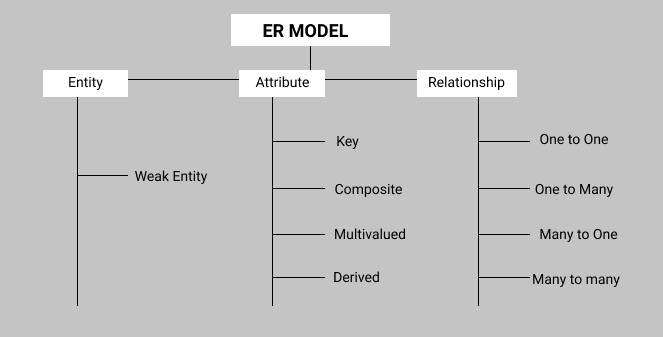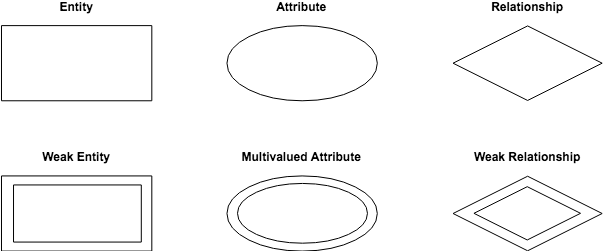Table of Contents
In this article, you’ll learn about what is Entity Relationship Diagram, what are the Components of ER Diagram and more.
Peter Chen developed the Entity Relationship Diagram (ERD) in the 1970s and published his proposal for entity relationship modeling in a 1976 paper titled “The Entity-Relationship Model: Toward a Unified View of Data”.
What is Entity Relationship Model
An Entity–relationship model (ER model) describes the structure of a database with the help of a diagram, which is known as Entity Relationship Diagram (ER Diagram). An ER model is a design or blueprint of a database that can later be implemented as a database.
Or
The ER model defines the conceptual view of a database. It works around real-world entities and the
associations among them. At the view level, the ER model is considered a good option for designing databases.
Components of ER Diagram

1. Entity
An entity can be a real-world object, that can be easily identifiable. For example, in a school database, students, teachers, classes, and courses offered can be considered as entities. All these entities have some attributes or properties that give them their identity.
2. Entity Set
An entity set is a collection of similar types of entities. An entity set may contain entities with attribute sharing similar values.
For example, a Students set may contain all the students of a school; likewise a Teachers set may contain all the teachers of a school from all faculties. Entity sets need not be disjoint.
3. Attributes
- Entities are represented by means of their properties, called attributes. All attributes have values. For example, a student entity may have name, class, and age as attributes.
- There exists a domain or range of values that can be assigned to attributes.
For example, a student’s name cannot be a numeric value. It has to be alphabetic.
A student’s age cannot be negative, etc.
Types of Attributes
- Simple attribute − Simple attributes are atomic values, which cannot be divided further. For example, a student’s phone number is an atomic value of 10 digits.
- Composite attribute − Composite attributes are made of more than one simple attribute. For example, a student’s complete name may have first_name and last_name.
- Derived attribute − Derived attributes are the attributes that do not exist in the physical database, but their values are derived from other attributes present in the database. For example, average_salary in a department should not be saved directly in the database, instead it can be derived. For another example, age can be derived from data_of_birth.
- Single-value attribute − Single-value attributes contain single value. For example − Social_Security_Number.
- Multi-value attribute − Multi-value attributes may contain more than one values. For example, a person can have more than one phone number, email_address, etc.
What is an Entity Relationship Diagram (ER Diagram)?
An ER diagram shows the relationship among entity sets. An entity set is a group of similar entities and these entities can have attributes.
In terms of DBMS, an entity is a table or attribute of a table in the database, so by showing the relationship among tables and their attributes, ER diagram shows the complete logical structure of a database. Let’s have a look at a simple ER diagram to understand this concept
A simple ER Diagram

In the following diagram, we have two entities Student and Teacher, and their relationship. The relationship between Student and teacher is many to one as a teacher can have many students however a student cannot study in multiple colleges at the same time. Student entity has attributes such as Stu_Id, Stu_Name & Stu_Addr and teacher entity has attributes such as tech_name & sub_code.
Geometric shapes and their meaning in an E-R Diagram.
- Rectangle: Represents Entity sets.
- Ellipses: Attributes.
- Diamonds: Relationship.
- Set Lines: They link attributes to Entity Sets and Entity sets to Relationship Set.
- Double Ellipses: Multivalued Attributes.
- Dashed Ellipses: Derived Attributes.
- Double Rectangles: Weak Entity Sets.
- Double Lines: Total participation of an entity in a relationship set.

1 comment
WOW just what I was looking for. Came here by searching for
website
Comments are closed.